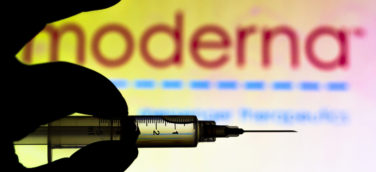Debate continues to swirl around emerging managed care practices such as copay accumulators and maximizers, while innovation could expedite tried-and-true practices such as prior authorizations (PAs), according to speakers at the Academy of Managed Care Pharmacy (AMCP) Nexus 2022 meeting. These were just two of the hot topics discussed at AMCP’s annual fall gathering held on Oct. 11 – 14 in National Harbor, MD.
Copay accumulator and copay maximizer programs have been around for a while, but became popular starting in 2017 to 2018, says Mindy Bauer, PharmD, Associate Director of Clinical Pharmacy at consultancy IPD Analytics. Today, they’re very common in private insurance programs with distinct pros and cons, depending on the stakeholders.
“Copay maximizer and accumulator programs are really a push and pull between drug manufacturers and payers,” Bauer says. “Patients, physicians, health systems are kind of stuck in the middle between this push and pull.”
Copay Accumulators and Maximizers
What are they? Considerable confusion still exists around copay accumulators and maximizers, Bauer notes. The programs were created by managed care organizations in response to manufacturers’ copay savings card programs, which lower a patient’s out-of-pocket cost to whatever dollar amount the manufacturer sets.
Some copay card programs might allow the patient to pay $0 copays, while others may lower the copay to $50 or $75 a month, for example. Copay card programs have been known to provide up to $60,000 a year to help lower out-of-pocket costs. In most cases, the copay savings cards stipulate that the drug must be covered by insurance.
“The idea behind these cards is that if the drug manufacturer can help make the copay or co-insurance more affordable, and help the patient meet their deductible, then they’re going to take their medication, and the manufacturer is going to get sales with the payer footing most of the bill,” Bauer says.
Manufacturer Copay Assistance Doesn’t Count Toward Deductible
The problem arises when a patient uses a copay card with a health plan that has a copay accumulator program in place. The plan collects the manufacturer’s money used to pay the patient’s out-of-pocket drug cost, but doesn’t apply that money to the patient’s deductible or out-of-pocket maximum.
Patients with health plans that have high annual deductibles—i.e., an amount a patient must pay out-of-pocket each year before the insurance coverage kicks in—are especially affected. Patients in such plans may have deductibles up to several thousands of dollars.
When the copay assistance runs out, the patient can be in an unpleasant surprise. Patients may see their out-of-pocket pharmacy costs skyrocket once they reach the maximum provided under the copay program. They find out these copays haven’t been chipping away at their deductible.
“Now they are responsible for their annual deductible a couple or a few months into the year,” she says. “It takes a lot of patients by surprise when they’ve been getting it so cheap all year.”
The result: some patients abandon the medication once they are fully responsible for the cost.
Copay Maximizers Are More Patient Friendly
Copay maximizers are similar to accumulator programs, Bauer notes. The amount that the drug manufacturer contributes under these programs goes towards the patient’s out-of-pocket drug costs, but doesn’t count towards the patient’s deductible or annual out-of-pocket maximum.
“In this way they’re identical,” she says. “Where they’re different is that maximizers assist with the patients copay all year long.”
The term “maximizer” comes from the fact that payers will fully use the maximum annual value of a copay card, which is the maximum dollar amount that a drug manufacturer is willing to contribute on a patient’s behalf to help with their out-of-pocket drug costs over the course of a year.
Under a maximizer program, an insurer typically works with a third-party vendor, which will use the maximum annual value dollar amount—for example, a maximum of $12,000 annually—to implement the program.
The insurer will take the maximum annual value of the manufacturer’s copay assistance and divide it out evenly throughout the year. Under the $12,000 example, the plan would make the patient’s copay $1,000 dollars a month, but the patient actually pays $0 a month out of pocket because the $1,000 each month is covered by the copay card. In this way, copay maximizer programs are more patient friendly than accumulators, Bauer says.
Manufacturer-Payer Push and Pull Arguments
As the use of copay accumulators and maximizers grow, so too does the controversy. Manufacturers contend payers are double dipping with their financial assistance programs.
“Not only does the payer collect the money from the drug manufacturer, but they also still collect the deductible and maximum out-of-pocket dollars from the patient,” Bauer says.
From a payer perspective, on the other hand, copay card programs are seen as manufacturers trying to sway patients to take more expensive medications than they would normally have taken. Such programs also can throw off a payer’s expectations for how much they plan to spend on different drugs, creating uncertainty on setting patient copays and establishing premiums.
But manufacturers reject that argument. They say, “No, really, these drugs that we’re offering copay cards on don’t have generic alternatives and they lack clinically appropriate alternatives that would lower costs,” Bauer says.
A further concern is the lack of transparency around these programs.
“Healthcare is already complicated,” Bauer says. “Health literacy is low for some patients. And we have a complicated health care system. Throwing these programs on top of all that makes it even more confusing for patients trying to navigate through their drug coverage when they may not even know that they have an accumulator or maximizer program on their plan.”
Prior Authorization: Seeking Better Information Flow
Complexities and confusion continue to dog the PA process, especially around accessing information and data to proactively inform the process, says Kim Boyd, Senior Consultant at Point-of-Care Partners, a health IT management consultancy. But she’s hopeful that a more expedited PA system is coming soon as innovators develop PA automation solutions and state and federal officials create rules and regulations that push the industry to streamline the PA process.
The evolution of PAs is centering on automated and expedited exchange of data. This will help alleviate physicians and their staff from having to do manual tasks, such as stopping to make phone calls, answer phone calls, or send faxes, Boyd says.
Proposed utilization management rules and requirements, as well as automated data solutions should significantly simplify the process.
For example, the Department of Health and Human Services (HHS) just issued a Notice of Proposed Rulemaking (NPRM) on December 13th that proposes the use of the HL7 Fast Healthcare Interoperability Resource (FHIR) Standards and the Da Vinci CRD, DTR and PAS Implementation Guides (IGs) to improve the PA process for medical services and products.
According to Boyd, the rules aim to reduce burdens through common standards that would push automated communication and information sharing between EHRs and the payer’s utilization management engines. This should reduce the use of paper, faxes, and phone calls and see more data fluidity happening to inform administrative and clinical processes.
“Instead of waiting two to three weeks to find out whether or not the plan is going to or not going to cover that particular therapy, for that particular patient, for that particular diagnosis, the doctor will know more expeditiously,” she explains.

















